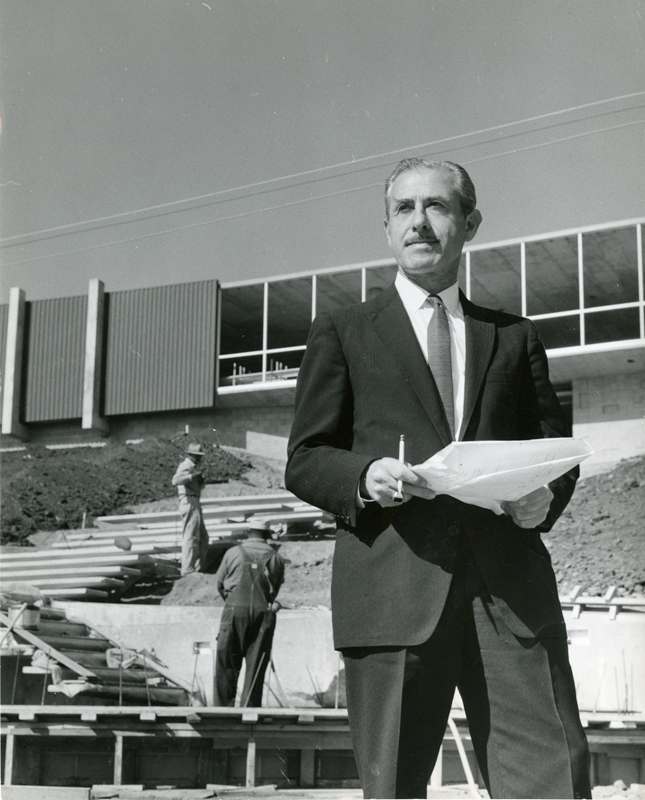Mario Ciampi
Mario Ciampi was a native of San Francisco. He studied architecture in various places: he was a Special Student at the Harvard Graduate School of Design (1930-32), attended the Beaux Arts Institute in Paris (1932) and studied at the San Francisco Architectural Club. He earned his license to practice architecture in 1935. Ciampi eventually gained prominence within the profession by designing schools and churches in such fast-growing communities as Daly City. In 1959, for instance, his Westmoor High School in Daly City and Sonoma Elementary School in Sonoma received two of the five honor awards given that year by the American Institute of Architects. In the 1960s, his firm went on to design the remarkable Berkeley Art Museum. In addition to his architecture, Mr. Ciampi left his imprint on San Francisco as the consultant in charge of the city’s 1963 downtown plan.
The Professional Papers contain biographical material, files related to awards, travel, and Ciampi’s participation in the 1959 architects creativity study conducted by U.C. Berkeley’s Institute for Personality Assessment & Research. The Office Records consist primarily of publicity materials such as tear sheets and clip files of Ciampi’s work. Reference files related to specific aspects of the San Francisco Downtown Plan are also included in this series. The Project Record Series contains a disappointing assortment of pieces such as a few mounted drawings of his ideas for San Francisco’s Yerba Buena Center and Ferry Plaza/Embarcadero, printed planning reports, and a few drawings for projects such as S.F. Union Square, the Berkeley Art Museum, and Yerba Buena Center. Fortunately the records contain photographs and slides that present a more comprehensive view of Ciampi’s important early work with public schools and churches.

